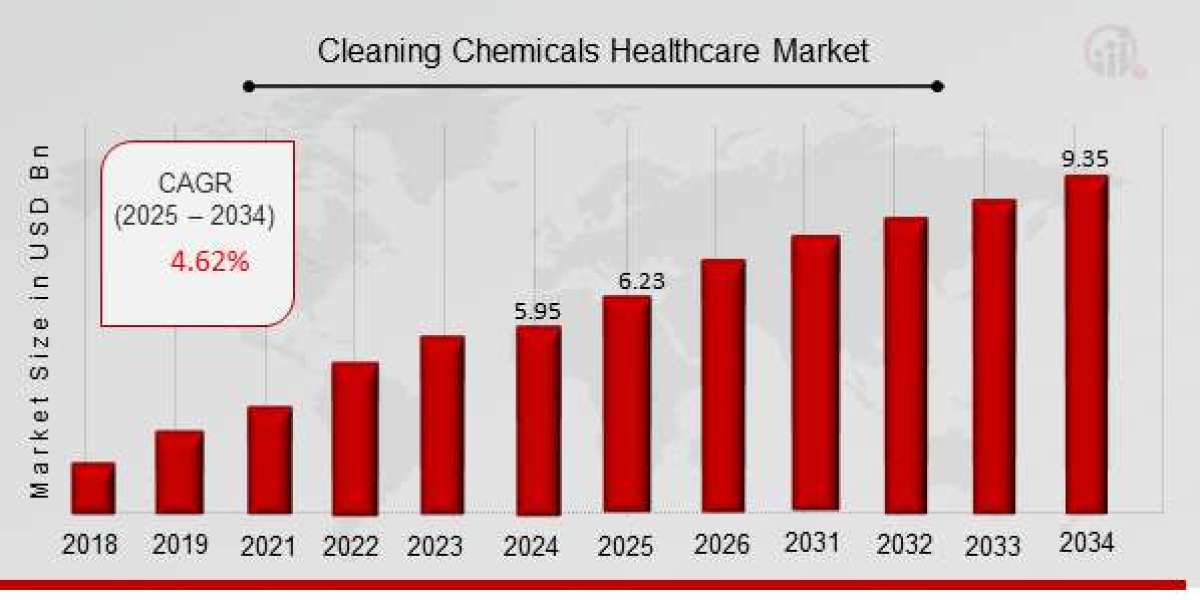The Next Generation of Infection Control: How Cleaning Chemicals Are Evolving in Healthcare
In healthcare settings, infection control is not just a priority—it's a critical component of patient care. Hospitals, clinics, and other medical facilities are hubs of activity, with patients and healthcare workers interacting in ways that can unintentionally spread harmful pathogens. Over the years, cleaning chemicals have played a vital role in mitigating these risks, but as the healthcare landscape evolves, so too must the tools we use to keep it clean and safe. In 2025, cleaning chemicals in the healthcare sector are evolving in ways that make them more efficient, safer, and environmentally friendly.
The Role of Cleaning Chemicals in Infection Control
In healthcare environments, infection control protocols are paramount. Cleaning chemicals, such as disinfectants, sanitizers, and sterilizers, serve as the first line of defense against the spread of healthcare-associated infections (HAIs), which are a significant cause of morbidity and mortality worldwide. These infections are caused by bacteria, viruses, fungi, and other pathogens that thrive in hospitals, where patients are often immunocompromised.
Infection control involves a multi-pronged approach: isolating infected patients, using proper hand hygiene, sterilizing medical equipment, and, crucially, disinfecting surfaces. Cleaning chemicals are designed to kill or deactivate these harmful pathogens and reduce the chances of transmission. From high-touch surfaces like doorknobs and bedrails to complex medical instruments, cleaning agents ensure that healthcare workers and patients are protected from unnecessary exposure.
Advances in Cleaning Chemicals
1. Enhanced Efficacy Against Pathogens
The evolution of cleaning chemicals has been driven by the need for more powerful, broad-spectrum solutions. In recent years, chemical formulations have been developed that can target a wide range of pathogens, from bacteria and viruses to more resilient spores like Clostridium difficile and Norovirus.
For instance, many cleaning products now incorporate advanced disinfectants that not only kill common hospital pathogens but also remain active for longer periods, offering prolonged protection after the initial application. This is especially important in areas like intensive care units (ICUs), operating rooms, and emergency departments, where the risk of infection is heightened due to the severity of patients’ conditions.
2. Faster Action and No-Rinse Formulas
In the past, many disinfectants required prolonged contact time to effectively kill germs, which meant waiting several minutes before wiping away the solution. However, the latest cleaning chemicals are designed to act much more quickly, significantly reducing the time required for disinfection. In some cases, these products require no rinsing, providing added convenience for healthcare staff and reducing the risk of chemical exposure to patients.
No-rinse and fast-acting disinfectants are particularly useful in high-traffic areas, such as waiting rooms and hallways, where it is impractical to wait for long contact times. These innovations help ensure that the cleaning process does not disrupt patient care or hospital operations, providing a quicker turnaround between cleaning and patient use.
3. Safer and More Environmentally Friendly Ingredients
One of the growing trends in the healthcare cleaning chemicals market is the shift toward greener and safer products. Traditional cleaning chemicals often contain harsh ingredients, such as bleach and ammonia, which can pose health risks to both cleaning staff and patients if used improperly or if residues are left behind.
In response, manufacturers are developing cleaning solutions that are less toxic, biodegradable, and free of volatile organic compounds (VOCs). These environmentally friendly disinfectants are not only safer for hospital staff but also contribute to sustainability efforts, which are becoming an increasing priority in healthcare facilities globally.
For example, some new-generation cleaners are formulated with plant-based ingredients that retain their disinfecting properties but are less harmful to both human health and the environment. These products can still achieve the high-level disinfection required in healthcare but do so with less environmental impact, promoting a healthier overall environment for patients, staff, and visitors.
4. Smart Technology Integration
The integration of smart technologies into cleaning chemicals is also on the rise. Some advanced disinfectants come with built-in indicators that show whether the surface has been adequately disinfected. These indicators change color to visually demonstrate whether a surface has been properly treated, offering real-time feedback to cleaning personnel.
In addition, automated cleaning systems, such as robotic cleaners and UV-C sterilization devices, are becoming increasingly common in healthcare settings. These systems are often paired with cleaning chemicals that are applied in precise amounts, ensuring that every surface receives the right level of disinfection without the risk of overuse or wastage.
Challenges and Future Outlook
Despite these advancements, challenges still exist. One of the main concerns in the cleaning chemicals healthcare market is the development of antimicrobial resistance (AMR). Overuse of certain disinfectants could potentially lead to pathogens developing resistance, making it more difficult to treat infections. To combat this, there is a growing emphasis on rotating different classes of disinfectants and utilizing a variety of cleaning agents to reduce the risk of resistance.
Moreover, there is an increasing need for healthcare facilities to educate and train their staff on proper cleaning techniques and chemical use. The best cleaning chemicals will only be effective if they are used correctly, and improper use or inconsistent application can lead to ineffective cleaning and the continued spread of infections.
Looking ahead, we can expect even more breakthroughs in cleaning technology. From self-sanitizing surfaces to advanced cleaning robots powered by artificial intelligence, the future of infection control in healthcare will likely involve even more automation and innovation. As the demand for cleaner, safer healthcare environments continues to grow, cleaning chemicals will remain a crucial part of the equation—becoming smarter, safer, and more effective in protecting both patients and healthcare workers.
Conclusion
The next generation of cleaning chemicals for healthcare is shaping the future of infection control, bringing with it safer, more effective, and faster-acting solutions that address both current and emerging challenges. As hospitals and clinics evolve, so too must the cleaning products and techniques that protect patients, staff, and visitors. With continued innovation, the healthcare cleaning chemicals market is poised to play an even more significant role in creating safer, cleaner environments for all.






